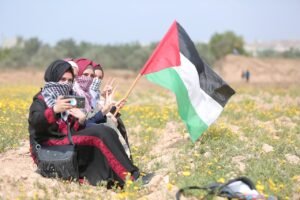Exploring the Rich Tapestry of Pakistani Culture
Pakistan, a nation nestled at the crossroads of South Asia, Central Asia, and the Middle East, boasts a rich and diverse cultural heritage that reflects its complex history and the confluence of various civilizations. From its vibrant festivals to its unique culinary traditions, the culture of Pakistan is a tapestry woven with threads of historical influences, regional diversity, and a strong sense of identity.
Historical and Cultural Influences
The cultural landscape of Pakistan has been shaped by a series of historical influences. The region’s history is a mosaic of ancient civilizations, including the Indus Valley Civilization, one of the world’s earliest urban centres. Successive empires and invaders, such as the Persian Empire, Alexander the Great, and the Maury and Gupta Empires, have left indelible marks on the cultural fabric of Pakistan. The arrival of Islam in the 7th century, followed by the establishment of the Mughal Empire, further enriched the region’s culture, blending South Asian traditions with Islamic art, architecture, and cuisine.
Diverse Ethnic and Linguistic Tapestry
Pakistan is home to a myriad of ethnic groups, each contributing to the country’s cultural richness. Punjabis, Sindy’s, Pashtuns, Baloch, and Muhajirs are the principal ethnic groups, with each maintaining distinct languages, traditions, and customs. Urdu, the national language, serves as a linguistic bridge among the diverse populations, while regional languages such as Punjabi, Sindhi, Pashto, and Balochi reflect the linguistic plurality of the country.
The diversity of ethnic groups is mirrored in the various cultural practices across Pakistan. For instance, Punjabi culture is known for its vibrant folk music and dance forms like Bhangra, while Sindhi culture is characterized by its colourful embroidery and traditional Sufi music. Pashtun culture places a high value on hospitality and traditional codes of honor, while Baloch culture is distinguished by its unique tribal traditions and music.
Festivals and Celebrations
Pakistani festivals are a colourful and exuberant reflection of the country’s diverse cultural heritage. Religious festivals such as Eid-ul-Fitr and Eid-ul-Adha are celebrated with great enthusiasm, marked by communal prayers, feasts, and charity. The annual celebration of Basant, a festival heralding the arrival of spring, is particularly notable in Lahore, where the skies are filled with vibrant kites, and traditional music and food abound.
Additionally, cultural festivals like the Shandur Polo Festival in Gilgit-Baltistan and the Karachi Literature Festival showcase the rich traditions and artistic expressions of Pakistan. These events not only highlight regional traditions but also serve as a platform for cultural exchange and unity.
Cuisine: A Culinary Melting Pot
Pakistani cuisine is as diverse as its culture, with each region offering its unique flavours and specialties. Punjabi cuisine is known for its hearty dishes such as Biryani, Karachi, and various types of bread like Naan and Roti. Sindhi cuisine features spicy and aromatic dishes like Sindhi Biryani and Sindhi Karachi. Pashtun cuisine includes kebabs and stews like Pulao and Chapli Kebab, while Balochi cuisine is recognized for its slow-cooked meats and traditional Sajji.
The influence of Mughal cuisine is evident in many Pakistani dishes, characterized by the use of rich spices, saffron, and elaborate cooking techniques. Street food culture also thrives in Pakistan, with vendors offering an array of snacks like Samosas, Pakoras, and Chat, reflecting the country’s love for flavourful and diverse culinary experiences.
Art and Craft
The artistic expressions of Pakistan are deeply rooted in its history and cultural diversity. Traditional crafts such as intricate embroidery, pottery, and weaving are celebrated throughout the country. Pakistani textiles, including the famous Pashmina shawls from Kashmir and the vibrant Ajrak prints of Sindh, are renowned for their quality and craftsmanship.
Contemporary Pakistani art is also gaining recognition on the global stage. Modern artists and designers are blending traditional motifs with contemporary styles, creating a dynamic art scene that reflects the evolving cultural landscape of Pakistan.
Conclusion
The culture of Pakistan is a rich amalgamation of ancient traditions, diverse ethnic influences, and modern expressions. It is a living, breathing entity that continues to evolve while preserving the essence of its historical roots. From its vibrant festivals and diverse cuisine to its artistic expressions and regional traditions, Pakistan’s culture offers a fascinating glimpse into the heart of a nation that values its heritage and embraces its diversity with pride.

